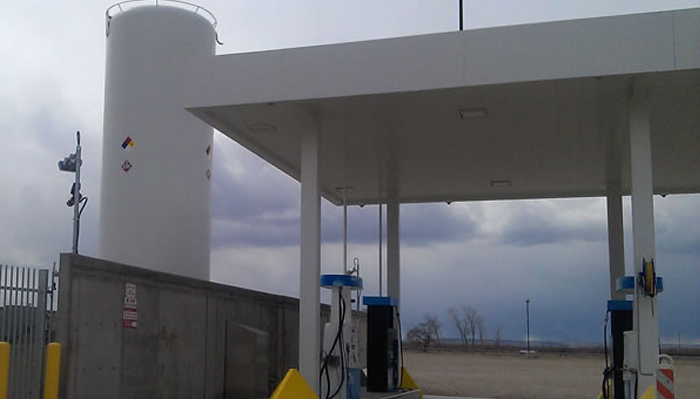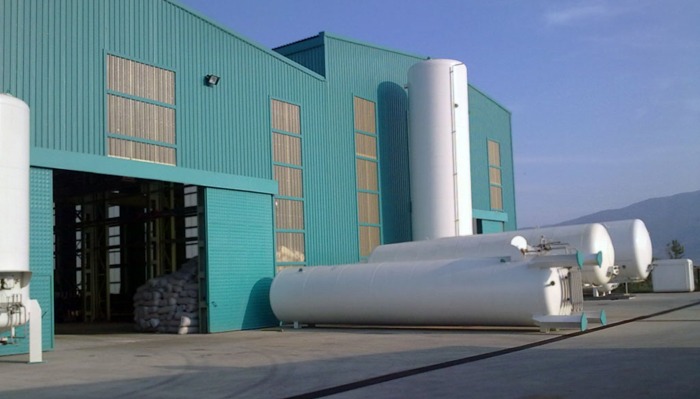Product Category
Periodic inspection of cryogenic liquid storage Vessel
Date: Nov 28, 2019

Cryogenic storage tank inspections are divided into external inspections, internal inspections and multi-sided inspections. The periodic inspection of the cryogenic liquid storage tank shall be determined according to the technical use conditions of the storage tank. Generally speaking, external inspections are performed at least once a year, internal inspections are performed at least once every 3 years, and multi-faceted inspections are performed at least once every 6 years. If the service life of the cryogenic liquid storage vessel reaches more than 15 years, internal and external inspections are required every two years, and if the service life reaches 20 years, internal and external inspections are performed at least once every year.
I. Internal inspection
Are there any corrosive agent wear on the inner surface and manhole takeover storage tanks, cracks in the weld seam, head transition area or other places where stress is concentrated? When there is corrosion on the internal and external surfaces of the tank, the wall thickness of the suspected part should be multiple. measuring. If the measured wall thickness is less than the designed small wall thickness, the strength check should be re-checked, and suggestions on whether to continue to use and allow high working pressure are made; the inner wall of the tank has defects such as decarbonization, stress corrosion, intergranular corrosion and fatigue crack In this case, metallographic examination and surface hardness measurement shall be carried out, and an inspection report shall be submitted.
2. external inspection
Check whether the anti-corrosion layer, thermal insulation layer and equipment nameplate of the storage tank are intact, safety accessories, control devices are complete, sensitive and reliable; whether there are cracks, deformation, local overheating on the external surface; whether there are leaks in the welded joints and pressure components , Whether the fastening bolts are intact, whether the foundation is sinking, tilting and other abnormal conditions.
I. Internal inspection
Are there any corrosive agent wear on the inner surface and manhole takeover storage tanks, cracks in the weld seam, head transition area or other places where stress is concentrated? When there is corrosion on the internal and external surfaces of the tank, the wall thickness of the suspected part should be multiple. measuring. If the measured wall thickness is less than the designed small wall thickness, the strength check should be re-checked, and suggestions on whether to continue to use and allow high working pressure are made; the inner wall of the tank has defects such as decarbonization, stress corrosion, intergranular corrosion and fatigue crack In this case, metallographic examination and surface hardness measurement shall be carried out, and an inspection report shall be submitted.
2. external inspection
Check whether the anti-corrosion layer, thermal insulation layer and equipment nameplate of the storage tank are intact, safety accessories, control devices are complete, sensitive and reliable; whether there are cracks, deformation, local overheating on the external surface; whether there are leaks in the welded joints and pressure components , Whether the fastening bolts are intact, whether the foundation is sinking, tilting and other abnormal conditions.

3.multi-faceted inspection
Perform non-destructive inspection on the main weld or shell, with a random check length of 20% of the total length of the weld. After passing the internal and external inspections, perform a hydrostatic test at 1.25 times the design pressure of the storage tank and the design pressure Airtight test. In the above inspection process, the tank and the welds were leak-free, and no visible abnormal deformation of the tank was qualified.
After the inspection of the cryogenic liquid storage tank is completed, a report on the inspection of the storage tank must be made, and the problems and reasons that can be used or can be used but need to be repaired and cannot be used are reported.
Perform non-destructive inspection on the main weld or shell, with a random check length of 20% of the total length of the weld. After passing the internal and external inspections, perform a hydrostatic test at 1.25 times the design pressure of the storage tank and the design pressure Airtight test. In the above inspection process, the tank and the welds were leak-free, and no visible abnormal deformation of the tank was qualified.
After the inspection of the cryogenic liquid storage tank is completed, a report on the inspection of the storage tank must be made, and the problems and reasons that can be used or can be used but need to be repaired and cannot be used are reported.
Next article:
Send Your Inquiry
We not only provide a good product, but also provide high quality service. If you are interested in our products,
you can contact us in the following ways.
you can contact us in the following ways.







